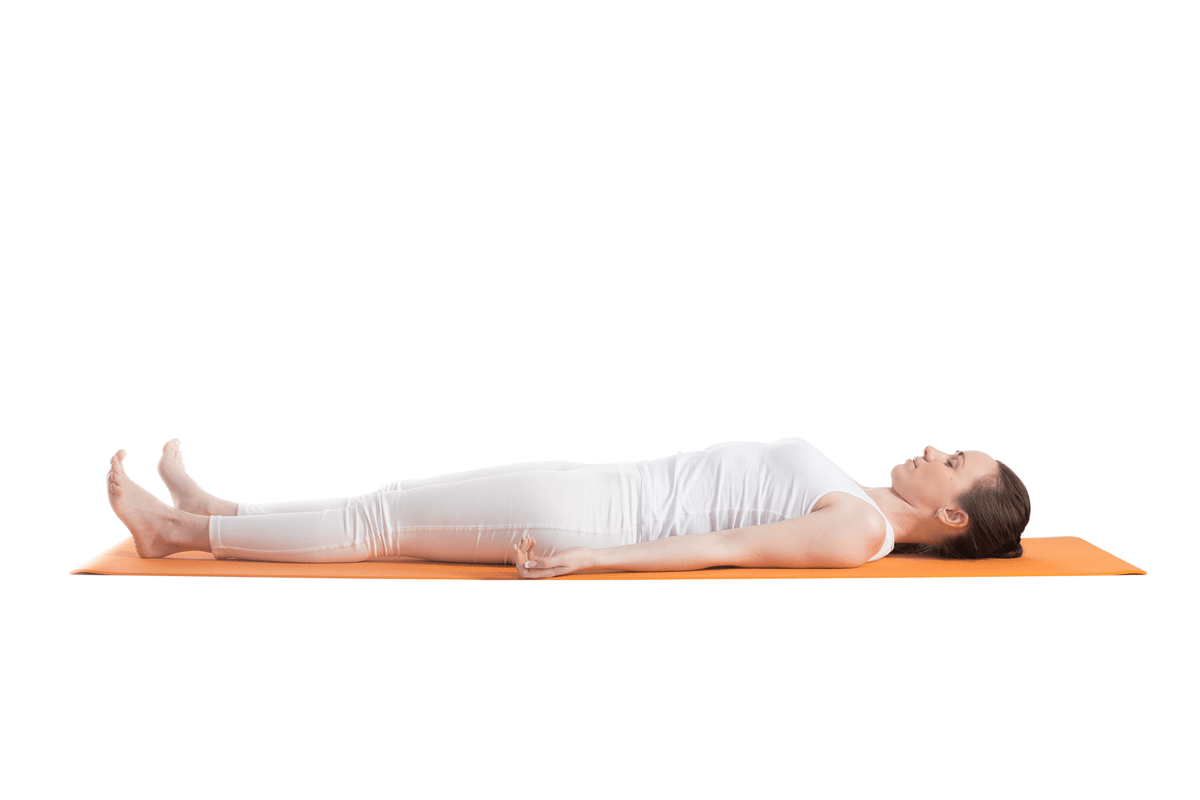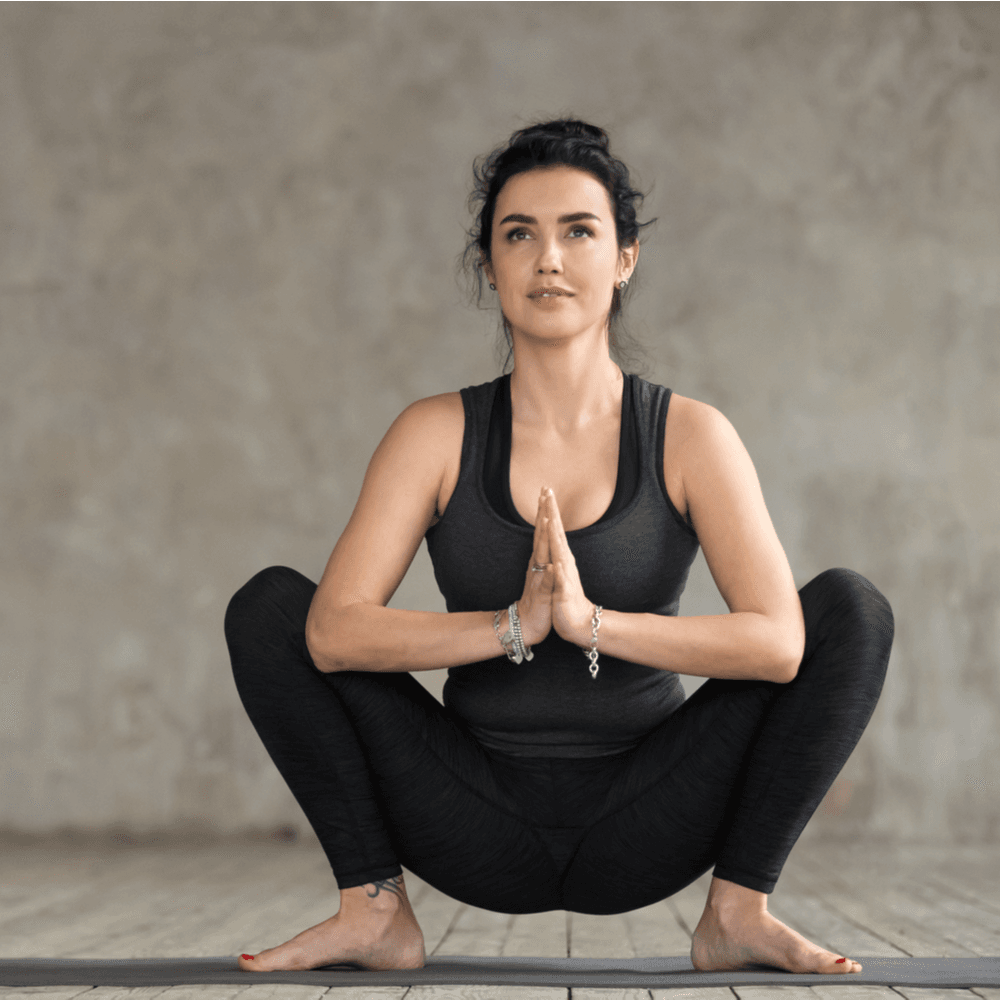Yoga Poses For Third Trimester Pregnancy

The third trimester of pregnancy can be physically and emotionally challenging. Prenatal yoga is a wonderful way to stay in shape, ease aches, and reduce pains, stress, and it helps you to prepare for your labor. Third-trimester yoga focuses on poses that provide comfort and rest, to help you prepare for birth and beyond. Restorative and most supine poses are incredibly helpful in the third trimester.
The third trimester is the time to prepare your body and mind for labor and delivery. By staying active, you can experience a healthy pregnancy, labor, and delivery. Stay away from poses that compress your belly and take it easy as the weeks go by. There is no reason to stop practicing prenatal yoga if you feel up to it.
Tips for Yoga
The third trimester of pregnancy is a crucial time to exercise, but you must consult your doctor about what you do? What poses or kind of yoga class should you do in your third trimester?
If you can only find time to start doing prenatal yoga when you take maternity leave, do not worry. Yoga is still beneficial even if you are starting later in your pregnancy. A certified instructor who leads prenatal yoga class will help ensure the poses and flows you perform are safe based on your pregnancy stage.
Whether it is an online class or a studio drop-in, a yoga class led by an instructor is your best bet if you are new to yoga or at all unsure of how to use yogic poses safely and beneficially during pregnancy. Just as prenatal yoga classes can help you quiet racing thoughts and focus attention on the present, prenatal yoga programs can offer guidelines for when it may be appropriate to back off on certain poses or modify your practice throughout your pregnancy.
If you are in your third trimester and still want to feel the benefits of prenatal yoga, avoid poses that involve lying on your back. For example, try a simple breathwork exercise:
- Try these yoga asanas to help strengthen your pelvic floor and decrease swelling.
- The goal is to create awareness of your perineum and a strong contraction without moving the rest of your body.
- As your baby drops, you may feel pain in your pelvic area or discomfort in your back as your center of gravity shifts. If you are experiencing hip pain, try using a yoga block under one side of your pelvis during this exercise to alleviate some pressure.
- The pull upward and inward helps to strengthen muscles that may be strained during delivery.
You may get an urge to overstretch during your pregnancy yoga practice but do not. Third-trimester yoga should be easy and gentle. Be careful not to overstretch your hips, knees, or hamstrings. Take care of your joints and ligaments, they are sensitive.
Listen to your body when doing yoga in your third trimester. By now you should be listening to what feels right and what does not during your pregnancy. Sun salutations can be very effective in late pregnancy when done with care, as well as other postures that stretch and strengthen the muscles needed for birth and recovery.
Yoga Poses for the Third Trimester
As your baby grows bigger, certain yoga poses can help to offset common complaints that arise during the third trimester including back pain and tightness, and trouble sleeping.
Sukhasana (Easy Pose)

Easy pose (also called Sukh asana) is a seated pose that promotes mental clarity and stretches your spine. Sit on the edge of a cushion, with one leg crossed over the other. You can place blocks or cushions under your knees for support, or even sit with your back against a wall. Close your eyes and breathe deeply as you hold this position for up to 1 minute. Repeat on the other side.
Easy Pose is a traditional yoga posture that helps open the hips and lengthen the spine, allowing you to breathe more deeply. This pose can be quite comfortable and is an excellent position for meditation.
Warrior Pose (Virabhadra asana)

These poses were designed specifically to relieve common third-trimester pregnancy symptoms. Poses such as the cat stretch, in which you gently round your spine up and down, can relieve back pain. Diaphragmatic breathing promotes relaxation and can help ease the pain of contractions during labor. Kneeling with your buttocks on your heels allows you to raise your chest and bend forward to relieve severe low-back pain that might occur during pregnancy. Try to hold each pose for 30 seconds or longer to maximize the benefits.
Side Corpse Pose (Parsva Savasana)

Lie on your left side. Keep left leg straight. Bend right knee and support it with cushions. Place a cushion under your head. Relax in this position for 15 minutes. During your third trimester, your growing baby is causing you to shift your center of gravity and posture. This can lead to pain in your lower back and legs, but practicing restorative yoga helps relieve these aches. Side Corpse Pose strengthens calves and ankles while opening the hips, alleviating hip discomfort.
Garland Pose (Malasana)

Malasana, or Garland Pose, is a deep squat that relaxes your low back and massages your organs, it also helps your mind to clear and focus. If you have any issues with prolapse do not attempt this pose though. Yoga poses in the third trimester can help you deal with the aches, pains, and discomforts of pregnancy and prepare your body for labor and birth.
Perform on an empty stomach. Begin by squatting, placing your feet a little over hip-width. Bring your inner thighs together, rest your elbows on the inside of your knees and push against your hands to open the groin area. Then slowly take a seat on your buttocks, keeping the inner thighs together and the heels touching each other. This should feel comfortable while you are sitting on the floor. If not, then place a block or a cushion underneath you so that you can maintain the alignment of this posture.
Yoga Help in Major Lifestyle Problems
Relief from Pain in Back
Yoga during pregnancy can be a simple, relaxing way to relieve the back pain common in the third trimester. The child’s pose, cat-cow, raised hands to pose, and supported bridge pose is all poses that can help ease discomfort.
Facing Sleep Problems
We know how important sleep is during pregnancy, but it can be hard to relax and get comfortable as your belly grows. Try these simple yoga asanas to unwind when it is time for sleep. When you are ready to transition into sleep, try Corpse pose (Savasana), or Yoga Nidra, a meditative yoga practice that has been shown to help initiate and improve sleep. Deep breathing helps too!
Yoga tips and Poses to Prepare for your Childbirth
Yoga can help you and the baby prepare for birth by helping you develop strength, balance, and flexibility. Plus, it is a great stress reliever during your final weeks of pregnancy. This yoga for pregnancy video includes poses to help open the hips, backbends to ease lower back pain, and stretches for the shoulders and back – all of which will help get you ready for labor and delivery.
In the final weeks of your pregnancy, yoga practice can help to alleviate some of the physical discomforts you may be experiencing. The child’s pose and happy baby pose provide relief to tired back muscles, while the cobbler’s pose with a block relieves tension in the hips, pelvis, and lower back. It may be helpful to have a block for this exercise.
Adaptations in Third Trimester
With a few modifications, you can continue to enjoy all the health benefits of yoga during your third trimester. During yoga poses in which you stand with one leg forward and one leg back – such as high lunge and warrior I – use a wider stance to maintain your balance. This will also help ensure that there is enough room for your growing belly.
Many of the same poses you practiced before pregnancy remain safe and comfortable during the third trimester, but you will need to make some adjustments. These adaptations will keep you and your baby safe, relaxed, and comfortable.
As your due date approaches your healthcare provider will likely recommend you stop doing any inversions, including Down Dog and Upward-Facing Dog. This is because they do not want you to go head down at this point when the baby’s position is settling into the birth canal.
Even in the third trimester, you can continue to practice many of your favorite yoga asanas. However, with a large belly and extra weight and pressure on your spine, certain yoga poses will no longer feel good. For example, you will avoid those that compress the abdomen while lying on your back. Poses where you lie on your belly are also off-limits in the third trimester. As your pregnancy progresses, there are various ways to modify any yoga posture to make it more comfortable and safer for you.
As the belly gets bigger and mobility becomes more difficult, many pregnant women find that they need to modify their yoga practice. As with exercise during any phase of pregnancy, it is best to listen to your body, and stop if you begin to feel pain or discomfort. Third-trimester adaptations focus on keeping the pregnant mother safe while still allowing her to reap the benefits of a regular yoga practice.
Downward Facing Dog and Squat are both examples of “static poses.” Static poses are described as “asanas where students hold one position for 3 or more breaths.” During your third trimester, you should decrease the number of static poses that you do, since they can put pressure on the baby.
Consult to Your Midwife and Doctor
Talk to your doctor, midwife, or prenatal yoga instructor about which poses to avoid. But many pregnant yogis, no matter their fitness level before becoming pregnant, find that just staying active throughout the entire pregnancy has great benefits. Poses that involve lying flat on your back or curling into a ball are most helpful during the third trimester. You can also use gentle inversions to help turn a breech baby and relax the lower spine.
During your third trimester, you may notice that some of the asanas you were able to perform are no longer comfortable. It is a good idea to create a yoga sequence made up of other, pregnancy-appropriate poses. Choose poses that feel good and avoid any that do not. Because of increasing weight and changes in body structure, things like standing on one foot are more difficult to do and can lead to injury if attempted without care.
